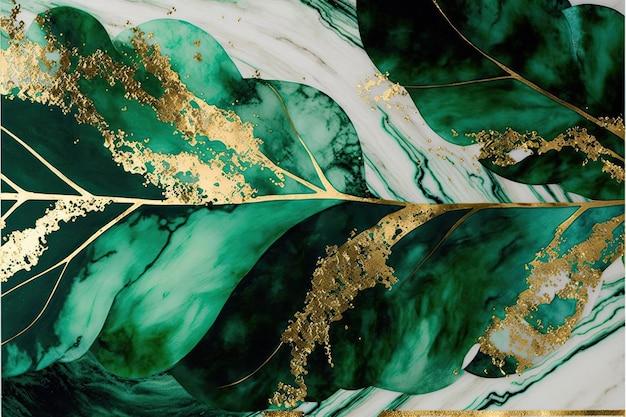Have you ever noticed that sometimes wearing gold jewelry can leave an unattractive green mark on your skin? It’s a common occurrence and can be quite a puzzle to solve. If you’ve ever wondered why gold has this peculiar reaction with your skin, you’ve come to the right place.
In this blog post, we’ll delve into the science behind why gold turns skin green. We’ll also explore various aspects related to gold, including its purity levels, different types of gold plating, and how to identify real gold from fake. So, whether you’re a jewelry enthusiast, a curious mind, or even someone looking to sell gold, this article will provide you with valuable insights to understand this intriguing phenomenon.
So, let’s dive in and unravel the mystery of why gold sometimes leaves a greenish stain on our skin!

Why Does Gold Turn Skin Green?
If you’ve ever noticed a green tinge on your skin after wearing gold jewelry, you might be wondering: why does gold turn skin green? It seems like a paradox, doesn’t it? After all, gold is supposed to be a precious metal that doesn’t tarnish or react with our skin. Well, let’s unravel this mystery together and find out the real reason behind this green phenomenon.
The Culprit: Alloyed Metals
Gold is not the actual culprit behind turning your skin green. It’s the alloyed metals mixed with gold that are to blame. You see, pure gold is too soft to be used in jewelry, so it’s often mixed with other metals to form an alloy. These metals can include copper, silver, nickel, and zinc.
The Chemical Reaction
When you wear gold jewelry that contains these alloyed metals, a chemical reaction occurs between these metals and the acids in your skin. One of the primary culprits is copper. As it reacts with the sweat and oils on your skin, it forms copper salts. These copper salts then oxidize and turn green when exposed to air.
Acidity and Moisture
The level of acidity in your skin, along with the amount of moisture, can also play a role in the speed at which your skin turns green. People with more acidic or sweaty skin are more prone to experiencing the green tint.
Solutions to Prevent the Green Tinge
Now that you know why gold turns skin green, let’s explore some solutions to mitigate this issue:
1. Choose Higher Karat Gold
Gold jewelry is available in different karats, which represent the purity of the gold. The higher the karat, the less likely it is to cause skin irritation. So opt for jewelry with higher karat gold, such as 18K or 24K, as they contain a higher proportion of pure gold.
2. Apply a Clear Nail Polish
To create a barrier between your skin and the alloyed metals in your gold jewelry, apply a thin layer of clear nail polish to the parts that come in direct contact with your skin. This protective layer will help prevent the chemical reaction and keep your skin green-free.
3. Remove Jewelry Before Physical Activity
Since sweat and moisture can speed up the chemical reaction, it’s a good idea to remove your gold jewelry before engaging in any strenuous physical activities or sports. Not only will this help prevent the green tinge, but it will also protect your jewelry from damage.
4. Keep Your Skin Clean and Dry
Maintaining good skin hygiene is another way to minimize the chances of your skin turning green. Clean your skin thoroughly before putting on gold jewelry, as any residue or oils can contribute to the reaction. Also, make sure your skin is dry before wearing gold jewelry, as moisture can enhance the chemical process.
Embrace the Green
Lastly, if you do end up with a green tint on your skin despite taking precautions, don’t fret! You can simply remove it with some soap and water or a gentle jewelry cleaner. And hey, who knows, maybe green is your color after all!

FAQ: Why Does Gold Turn Skin Green?
Gold jewelry is a classic choice for many individuals, but have you ever wondered why it can sometimes leave a green stain on your skin? This FAQ-style section aims to address your burning questions and shed some light on this intriguing phenomenon.
What Do Pawn Shops Offer for 14K Gold
When it comes to selling your 14K gold jewelry at a pawn shop, the amount you can expect to receive will vary. Typically, pawn shops pay based on the current market value of gold and their own assessment of the item’s condition. It’s always a good idea to shop around and compare offers to ensure you’re getting a fair price for your gold.
Will Gold-Plated Jewelry Stick to a Magnet
No, gold-plated jewelry will not stick to a magnet. While gold itself is not magnetic, certain metals commonly used in gold-plating, such as nickel or steel, may exhibit magnetic properties. So, if your gold-plated jewelry is attracted to a magnet, it is likely not made purely of gold.
How Can You Tell if Gold Is Real or Plated
Distinguishing real gold from gold-plated items can be tricky, but fear not! There are a few simple tests you can perform. One popular method involves using nitric acid to determine if the gold is genuine. Additionally, professional jewelers have the expertise and specialized tools to accurately assess the authenticity of gold jewelry.
Which Gold Karat Is the Best
The “best” gold karat ultimately depends on your personal preference and intended use. 24K gold is the purest form, but its softness makes it less suitable for jewelry that undergoes frequent wear. For optimal durability and balance between value and purity, many individuals find 14K or 18K gold to be ideal choices. It’s all about finding the karat that aligns with your style and practical needs.
What Kind of Gold Turns Green
Contrary to popular belief, pure gold does not tarnish or cause discoloration. The culprit behind the green stain is actually the alloys mixed with gold. Metals such as copper or silver are often used to strengthen gold and give it different hues. The occurrence of green skin is most common with lower-karat gold, as higher-karat gold contains a higher proportion of pure gold and fewer alloys.
Can You Spot the Difference Between 10K and 14K Gold
Distinguishing between 10K and 14K gold can be quite challenging without the help of a trained eye or specialized tools. Both karats may appear visually similar, especially to the untrained observer. To accurately differentiate between the two, consulting a professional jeweler is recommended. They can assess the gold’s purity with precision and provide you with an accurate analysis.
How Long Will 18K Gold Plating Last
The lifespan of 18K gold plating primarily depends on usage, care, and personal habits. On average, 18K gold plating can maintain its lustrous appearance for one to three years with proper care. Avoid exposing your gold-plated jewelry to harsh chemicals, excessive moisture, or rigorous wear to extend its lifespan. Remember, taking off your gold-plated jewelry before diving headfirst into a chlorinated pool is always a good idea.
How Can You Tell if Jewelry Is Real
Determining the authenticity of jewelry requires a discerning eye and knowledge of various testing methods. You can start by examining the jewelry for hallmarks or stamps that indicate gold purity. Additionally, professional jewelers use specialized techniques, such as acid tests or electronic gold testers, to accurately determine if the piece is real or not. When in doubt, consulting an expert is your best bet!
Does “14K Italy” Mean It’s Real Gold
While “14K Italy” stamped on jewelry usually indicates that the piece is made of 14K gold, it’s not a foolproof guarantee of authenticity. Unscrupulous individuals may add fraudulent markings to deceive buyers. To ensure the gold’s genuineness, it’s always wise to consult a reputable jeweler who can verify its purity and origin.
Is 14K or 18K Gold Plating Better
Both 14K and 18K gold plating have their merits, but the “better” choice ultimately depends on your specific needs and preferences. 14K gold plating offers excellent durability and a more affordable price point. On the other hand, 18K gold plating provides a richer color, but it may be slightly less durable due to its higher gold content. Consider your desired appearance, intended use, and budget to determine which option best suits you.
How Much Is a 14K Gold Bracelet Worth at a Pawn Shop
The value of a 14K gold bracelet at a pawn shop will depend on factors such as current gold prices, the bracelet’s weight, and the shop’s assessment of its condition. To get an accurate estimate, it’s recommended to visit multiple pawn shops and compare offers. Just remember, sentimental value and design intricacies may not be factored into the price.
What Is the Difference Between 14K and 18K Gold
The primary difference between 14K and 18K gold lies in their respective gold purity levels. While both are made up of gold and alloys, 14K gold contains 58.3% pure gold, while 18K gold contains 75% pure gold. The higher gold content in 18K gold results in a richer color and slightly softer durability compared to 14K gold. Consider your style preferences, durability needs, and budget to make the right choice for you.
Why Does Gold Turn Skin Green
Ah, the golden question! The green staining that sometimes occurs when wearing gold jewelry is a result of chemical reactions between the metals in the jewelry and your skin. The acids and oils naturally present on your skin can interact with the alloys in gold, such as copper, causing a harmless green discoloration. Fear not, it’s not a sign that you’re secretly a leprechaun! To prevent this colorful phenomenon, try applying a thin coat of clear nail polish to the areas of the jewelry that come into direct contact with your skin.
With these FAQs answered, you’re now equipped with valuable knowledge about why gold can turn your skin green. Embrace your gold jewelry, understanding that a little green never hurt anybody – unless, of course, you’ve been gallivanting around in a lush meadow! Remember, when it comes to gold, a touch of whimsy and a dash of chemistry make for an enchanting combination.
